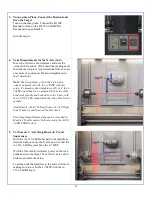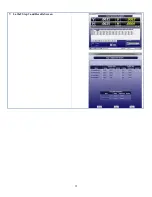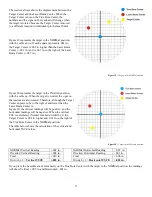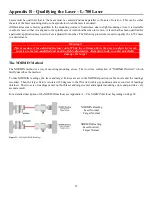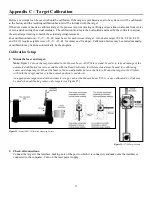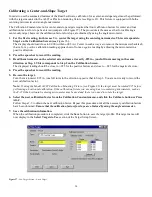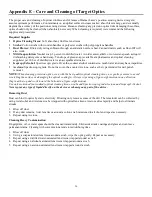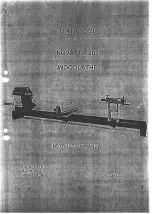
36
Appendix E – Care and Cleaning of Target Optics
The proper care and cleaning of optical windows and/or lenses of Hamar Laser’s position-sensing devices (targets)
assures optimum performance. Contaminants on an optical surface increase scatter, absorb laser energy, and eventually
degrade the accuracy of the position-sensing devices. Because cleaning any precision optics risks damaging the surface,
optics should only be cleaned when absolutely necessary. When cleaning is required, we recommend the following
supplies and procedures.
Required Supplies
Optics Cleaning Tissue:
Soft, absorbent, lint-free lens tissue
Swabs:
Cotton swabs with wooden handles or polyester swabs with polypropylene handles
Dust Blower:
Filtered dry nitrogen blown through an antistatic nozzle is best. Canned dusters such as Dust-Off will
also work.
Mild Soap solution:
Neutral soap, 1 percent in distilled water. Avoid scented, alkali, or colored soap such as liquid
dishwashing detergents or hand soap. Ten drops of green soap (available at a pharmacies and optical cleaning
suppliers) per 100 cc of distilled water is an acceptable alternative.
Isopropyl Alcohol:
Spectroscopic grade. Over-the-counter alcohol contains too much water and may have impurities.
Acetone:
Spectroscopic grade. Do not use over-the-counter Acetone, such as the type intended for nail polish
removal.
NOTE:
When cleaning precision optics, even with the best quality optical cleaning tissue, use gentle pressure to avoid
scratching the surface or damaging the optical coating(s). Always wipe using a figure-eight motion in one direction
(begin at the top and work toward the bottom in a figure-eight motion).
Use only moistened (not soaked) optical cleaning tissue, swabs and Spectroscopic grade Acetone and Isopropyl Alcohol.
Never spray any type of liquid directly on the device or submerge any part of the device.
Removing Dust
Dust can bind to optics by static electricity. Blowing only removes some of the dirt. The remainder can be collected by
using wet alcohol and Acetone swabs wrapped with optical lens tissue. Acetone dries rapidly and helps to eliminate
streaks.
1.
Blow off dust.
2.
If any dust remains, twist lens tissue around a cotton swab moistened in alcohol and repeat as necessary.
3.
Repeat using Acetone.
Cleaning Heavy Contamination
Fingerprints, oil, or water spots should be cleaned immediately. Skin acids attack coatings and glass and can leave
permanent stains. Cleaning with solvents alone tends to redistribute grime.
1.
Blow off dust.
2.
Using a soap-saturated lens tissue around a swab, wipe the optic gently. Repeat as necessary.
3.
Repeat using a distilled water-saturated lens tissue wrapped around a swab.
4.
Repeat using an alcohol-saturated lens tissue wrapped around a swab.
5.
Repeat using an acetone-saturated lens tissue wrapped around a swab.
Summary of Contents for L-702
Page 1: ......
Page 7: ...4 L 702 L 702SP Laser Dimensions...


